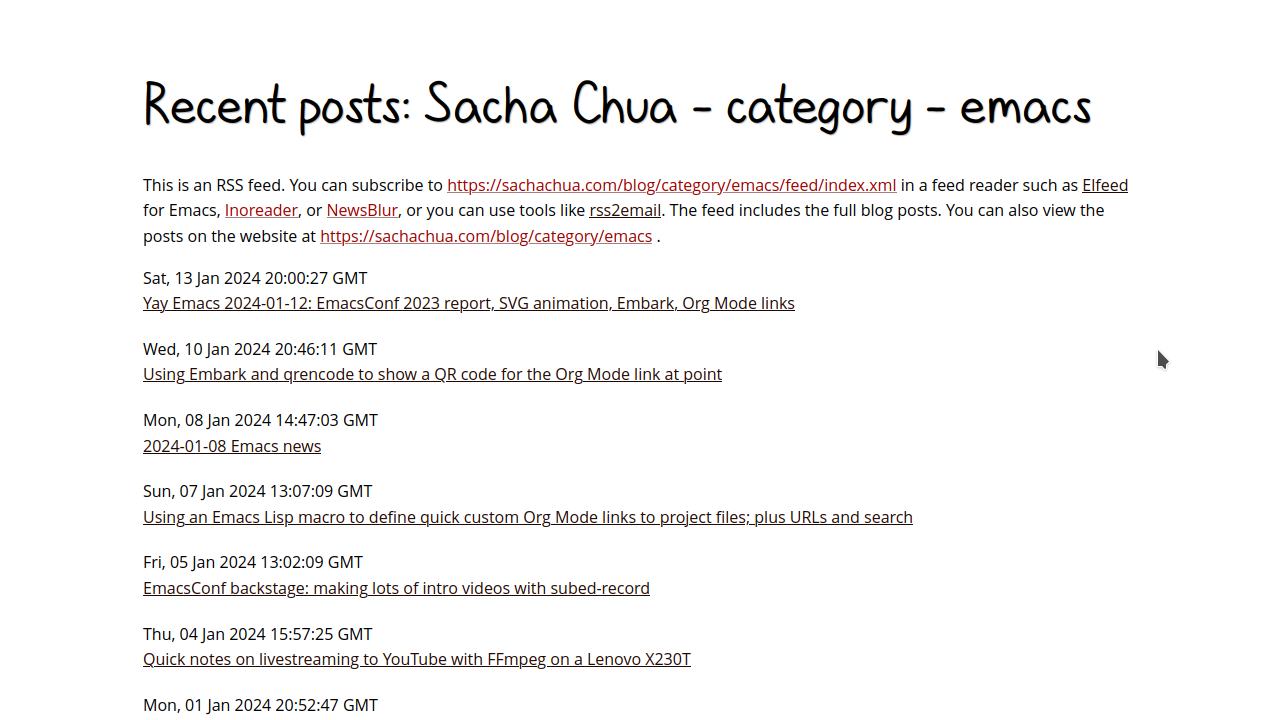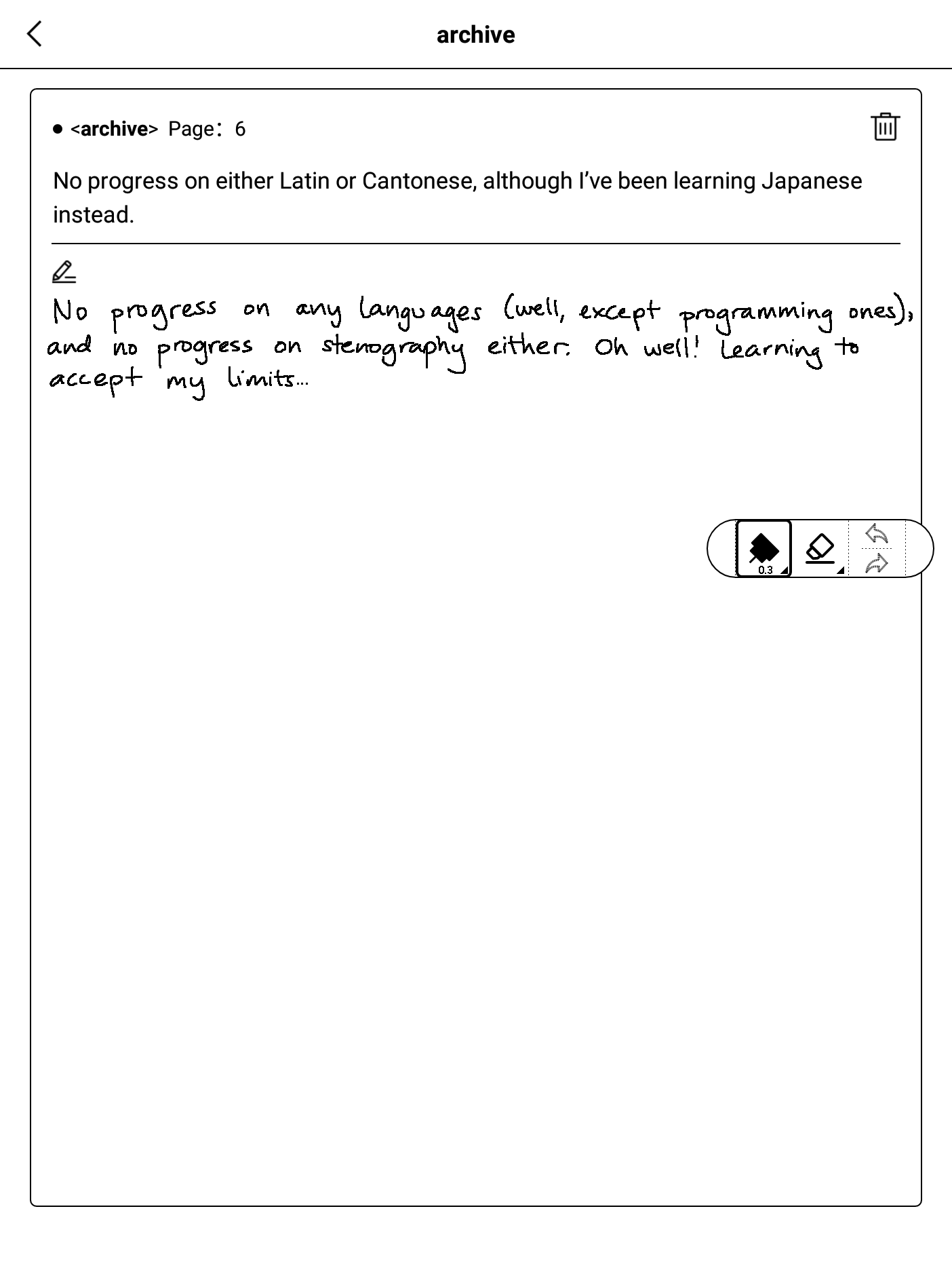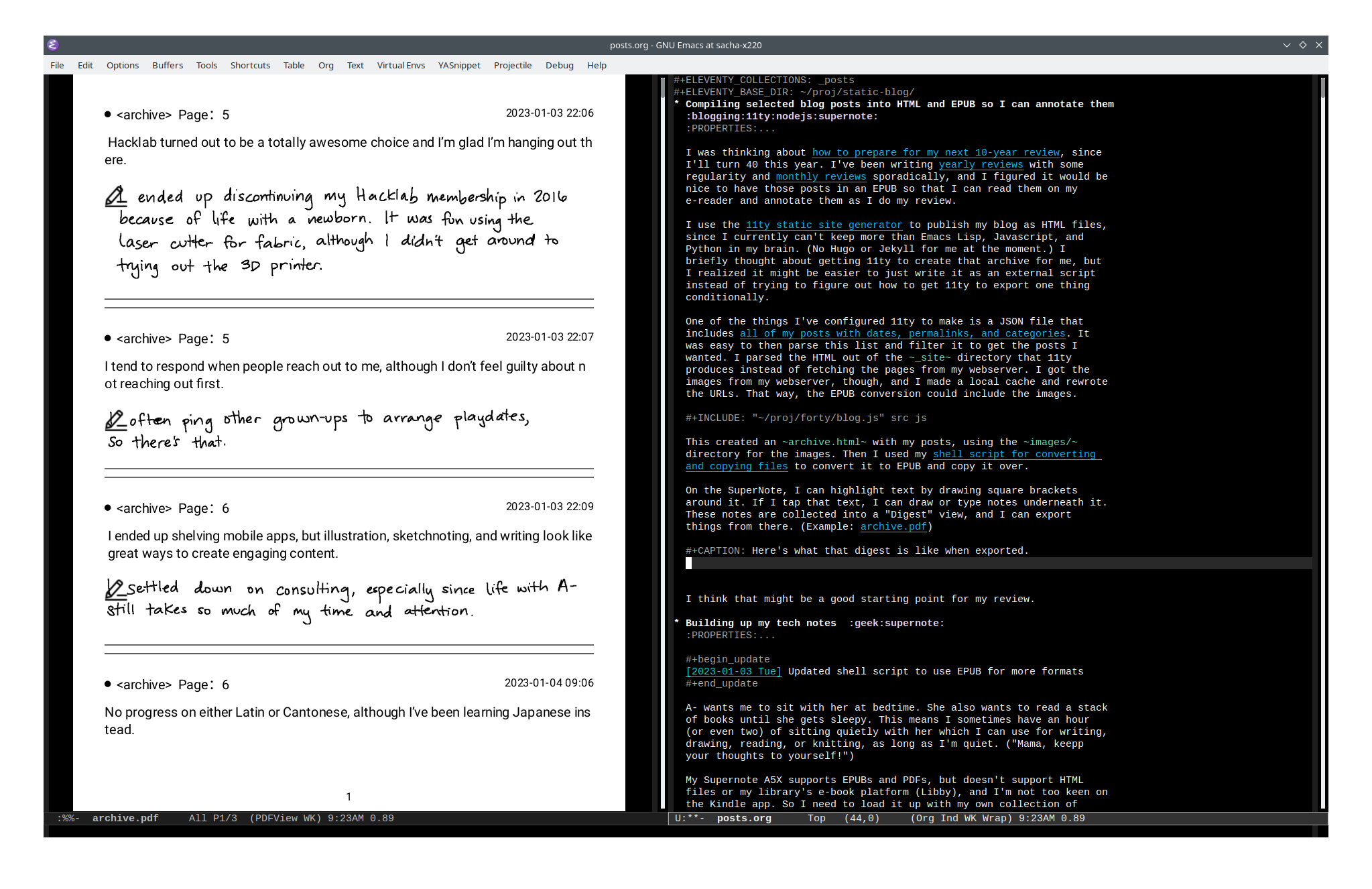I noticed something strange in my static blog: my blogging category
page didn't list my post on statically generating my blog with
Eleventy. Now it does, of course, since I fixed it. But it didn't, and
that was weird. I tried using console.log to debug it, but it was
annoying to try to figure out the right thing to print out in a long
list of nested objects. Besides, console.log debugging is so… last
century.
Since these tips for debugging in 11ty mentioned interactively
debugging things in VS Code, I decided it was a good time to learn how
to use Indium, a Javascript development environment for Emacs.
(use-package indium :hook ((js2-mode . indium-interaction-mode)))
After some trial and error, this was the .indium.json file that
allowed me to use M-x indium-launch to start the Eleventy process.
{
"configurations": [
{
"name": "11ty",
"type": "node",
"program": "node",
"args": "./node_modules/.bin/eleventy"
}
]
}
I originally had "inspect-brk": true in it as well, following the
suggested configuration, but I found it easier to just set breakpoints
in my files using indium-add-breakpoint (C-c b b, a keybinding set
up by indium-interaction-mode in my js2-mode-hook).
Conditional breakpoints didn't seem to work, so I just put my logic in
an if and set my breakpoint in there.
categories.forEach((item) => {
if (item.slug == 'blogging') {
let post = data.collections._posts.find(o => o.inputPath.match(/statically-generating-my-blog-with-eleventy/));
console.log(post);
}
...
}
When I set my breakpoint on the let post... line and ran M-x
indium-launch, I got an interactive debugger at that breakpoint. I
could also switch to the REPL console and type stuff. Yay!
As it turned out, the post I wanted wasn't showing up in the list of
posts. It was because I had used eleventyConfig.setTemplateFormats
and forgotten to include md for Markdown files. Once I figured out
what was going on, it was easy to fix. This is what the debugger looks
like. It adds values to the ends of lines, and you can evaluate
things.
I'm looking forward to learning more about using Indium to debug
scripts running in Node or Chrome. Slowly, slowly having some focused
time to sharpen the saw!
If you use Emacs for Javascript development and you're curious about
Indium, you can check out the documentation.





